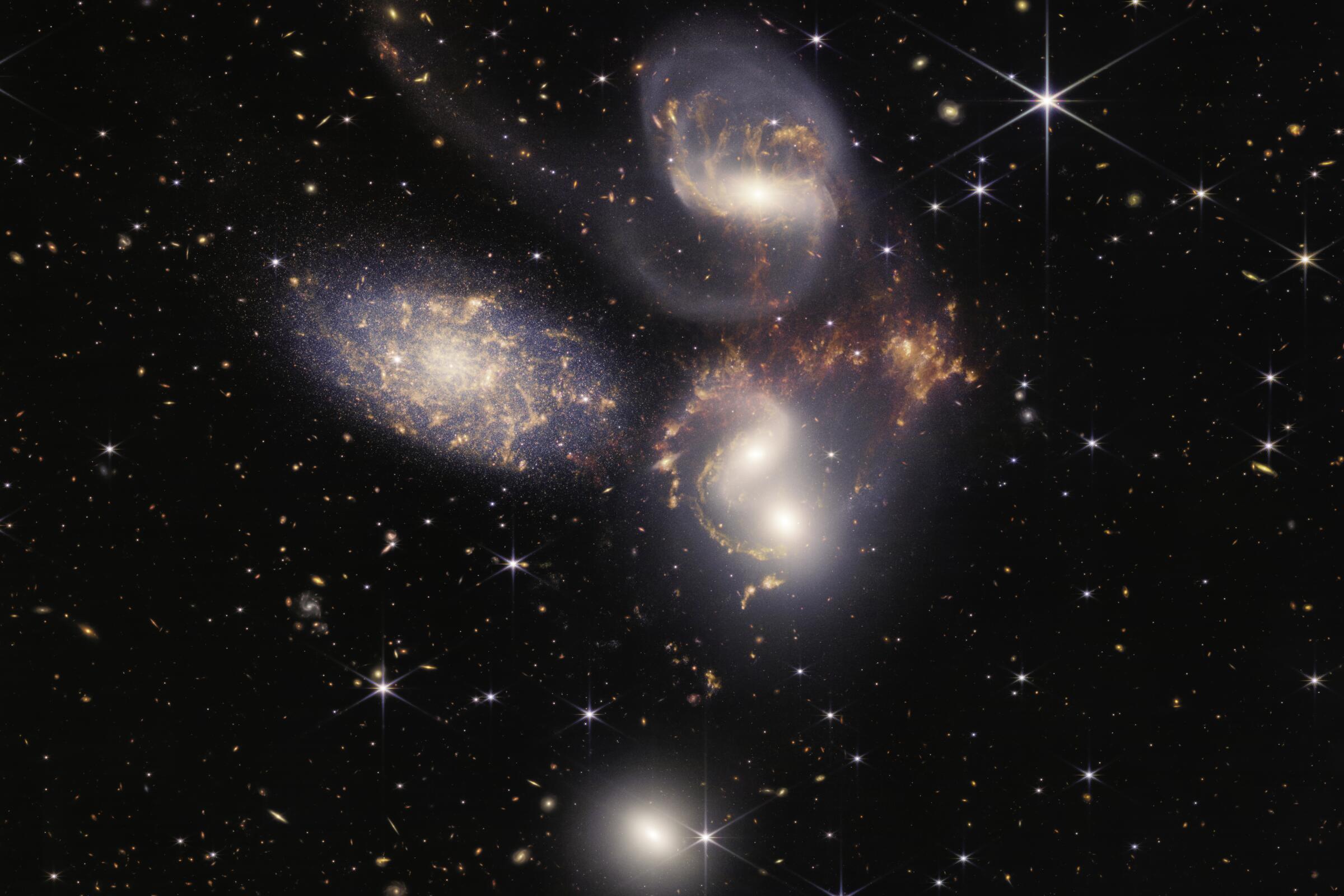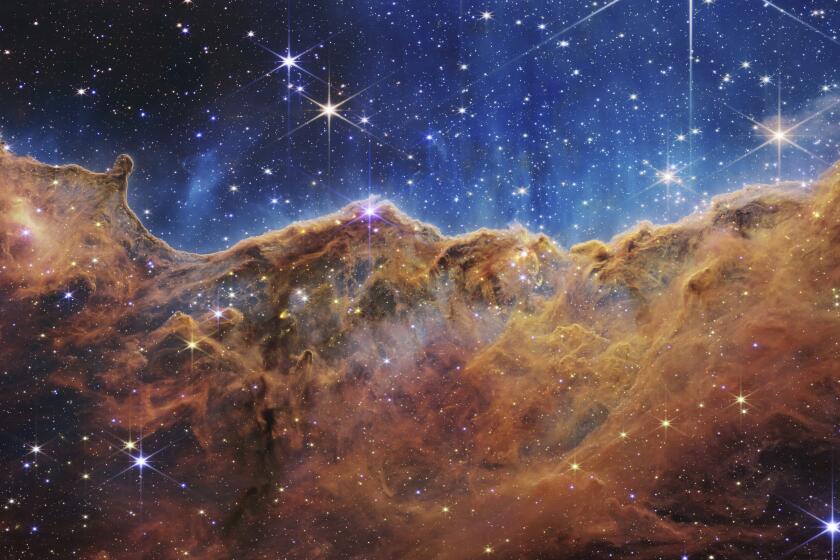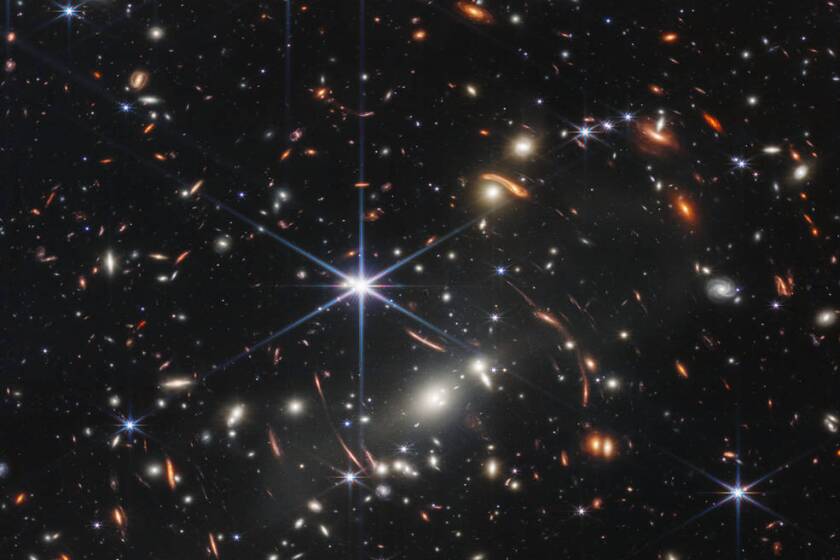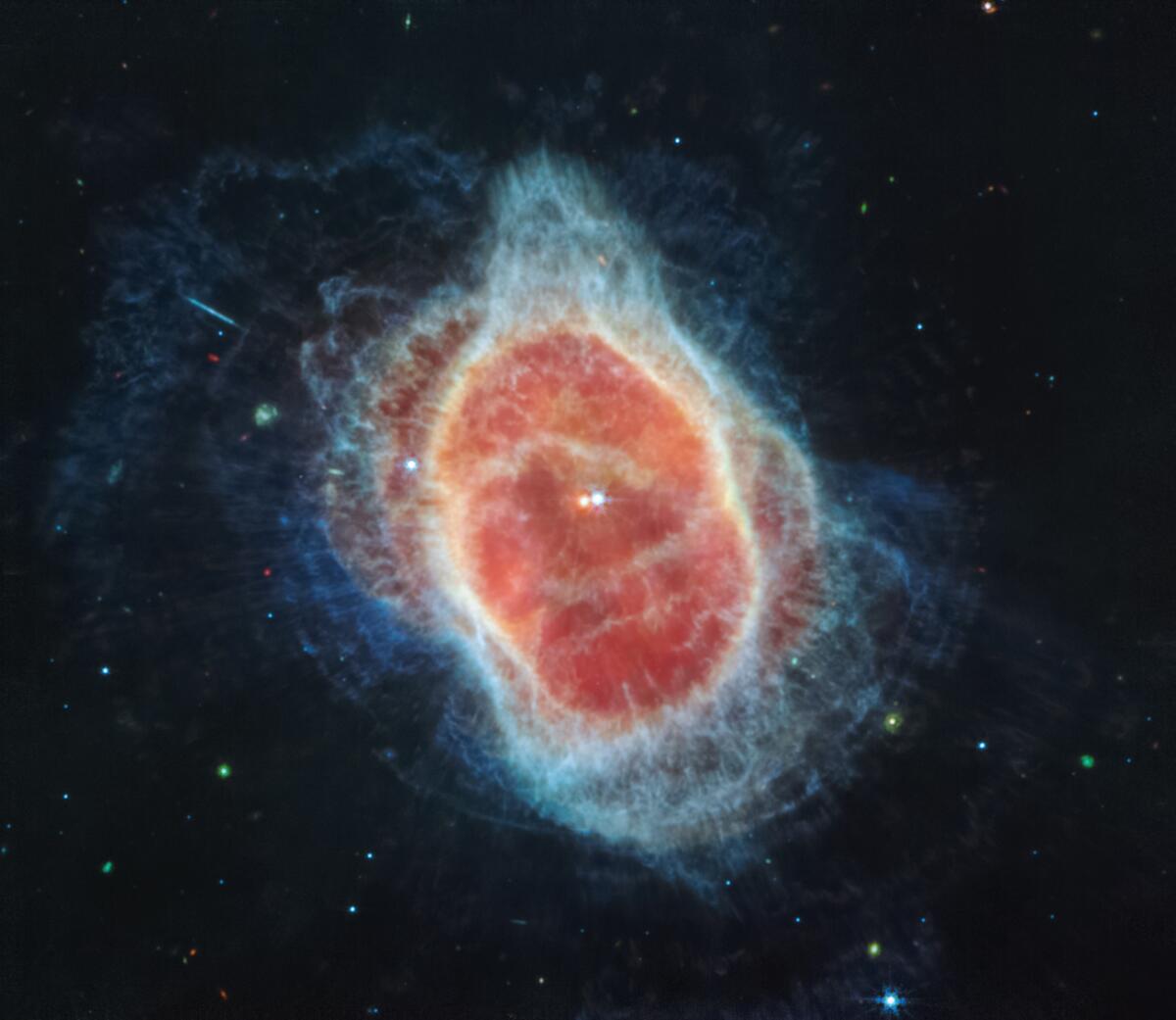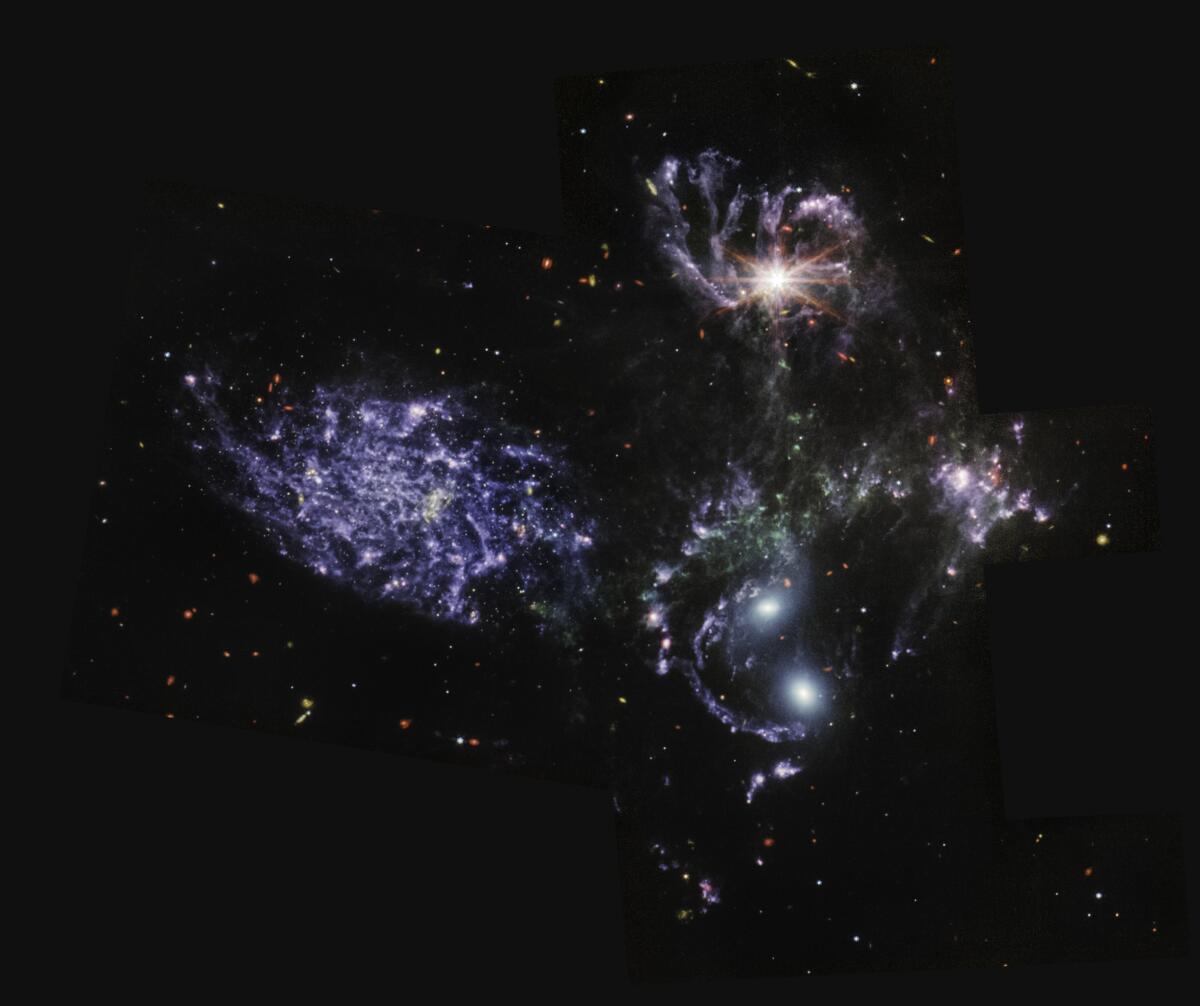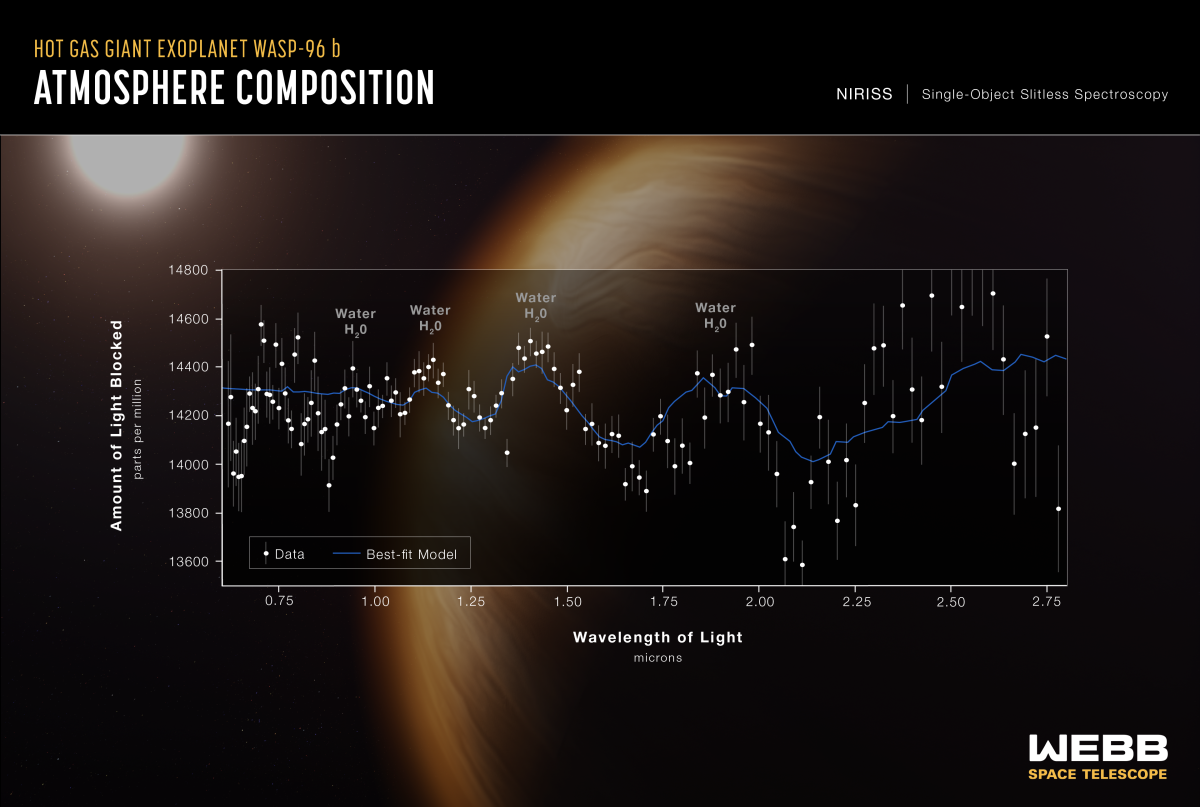A quintet of galaxies. A nursery of infant stars. A weather report for an exoplanet. And a preview of our own sun’s demise.
After years of delays, a 930,000-mile trip into space and months of speculation over what the James Webb Space Telelescope’s first pictures might reveal, NASA on Tuesday released the first complete set of images captured by its $10-billion observatory.
They show stars in their infancy and in their final gasps, along with sweeping views of the cosmos and the majestic objects in it.
“Every dot of light we see here is an individual star, not unlike our sun. And many of these likely also have planets,” NASA astrophysicist Amber Straughn said while introducing an image of the Carina Nebula, a multihued landscape of gas and nascent stars.
“It just reminds me that our sun and our planets and, ultimately, us were formed out of the same kind of stuff that we see here,” she said. “We humans really are connected to the universe. We’re made of the same stuff in this beautiful landscape.”
As the universe expands, the earliest galaxies move away from us so quickly that the visible light emanating from them is stretched into infrared wavelengths, which neither humans nor the Hubble Space Telescope can see.
But Webb can. That means it’s able to see the very first stars that glowed. The telescope’s two infrared cameras — the Near Infrared Camera (NIRCam) and the Mid-Infrared Instrument (MIRI), each tuned to different parts of the light spectrum — can also peer past the dust and gas that sometimes obscure Hubble’s view.
“The images are absolutely spectacular,” said Andrea Ghez, a UCLA astrophysicist who won the 2020 Nobel Prize in physics for her role in discovering the supermassive black hole at the the Milky Way’s core.
Later this year, Ghez and her colleagues will use Webb to study star formation at the center of our galaxy. Hers is one of 286 research teams NASA has approved to collect observations from Webb in its first year.
“I can’t wait to see what these images will reveal about the broader environment around the black hole,” she said.
Michael Ressler, a scientist at NASA’s Jet Propulsion Laboratory in La Cañada Flintridge who helped design MIRI, said the clearer pictures of objects that had already been seen by the Hubble Space Telescope may be stunning, but they’re not what he finds most exciting — “it’s actually seeing things that we’ve never seen before.”
All of the images released Tuesday point to something scientists didn’t know about the cosmos.
“It’s the beauty but also the story,” NASA astrophysicist John Mather, Webb’s senior project scientist, said after the reveal. “It’s the story of where did we come from.”
Here’s a closer look at what Webb saw in its first weeks on the job.
